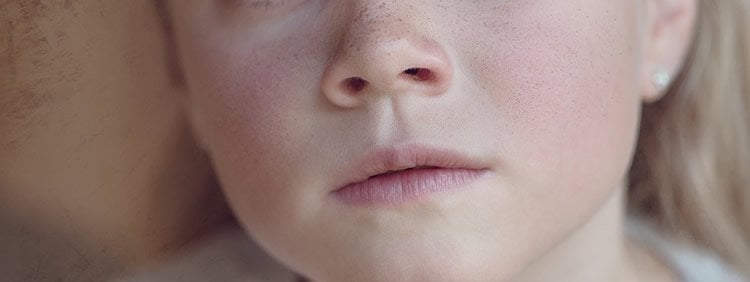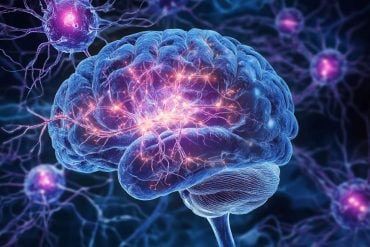Summary: Researchers report differences in oral microbial gene expression may distinguish children with ASD from their peers not on the spectrum. The study suggests GI microbiome disruptions, previously identified in children with ASD, may extend to the mouth and throat.
Source: Bioscribe.
New research suggests that shifts in the bacteria within a child’s mouth could provide objective biomarkers for identifying autism spectrum disorder. The findings of this research, conducted by scientists from Penn State Medical Center, SUNY Upstate Medical University, and Quadrant Biosciences, Inc., catalyze development of a novel, saliva-based panel to aid clinicians in the early diagnosis of autism spectrum disorder. The new study, “Oral Microbe Activity in Autism,” was published online by the journal Autism Research.
Previous research has suggested that bacteria living in the gastrointestinal (GI) tract may influence autistic behavior. Moreover, autism spectrum disorder (ASD) is associated with several abnormalities related to the mouth and throat, including taste and texture aversions, speech difficulties and salivary transcriptome alterations.
“There is mounting evidence that the GI microbiome is disrupted in children with ASD, and this study shows that this disruption may extend to the mouth and throat. It appears that gene expression activity within oral microbial communities is altered in children with autism spectrum disorder,” said Steven Hicks, MD, Ph.D., of Penn State Hershey, lead investigator on the project. “The shifts in microbial populations were associated with ASD co-morbidities such as GI disturbances, as well as social and repetitive behaviors. This research suggests that measuring activity of these microbial populations in saliva may provide objective biomarkers to aid in the clinical evaluation of ASD.”
In this study, researchers identified changes in the salivary microbiome of 346 children aged 2-6 years across three developmental profiles: ASD (n=180), non-autistic developmental delay (DD) (n=60), and typically developing children (TD) (n=106). Saliva was collected via cheek swab from each study participant. RNA from actively transcribing microbes was sequenced, quantified and analyzed across the three groups of children. ASD children with and without GI disturbances were also compared. The researchers found 12 groups of microbes to be altered between the development status groups and identified 28 groups that distinguished ASD patients with and without GI disturbances. Five ratios of microbes distinguished ASD from TD children (79.5% accuracy), three distinguished ASD from DD (76.5% accuracy), and three distinguished ASD children with/without GI disturbance (85.7% accuracy). Interestingly, the microbial gene expression patterns associated with autism were implicated in energy processing.

“The underlying association of specific microbial population shifts with ASD status will require further study, but may result from alterations of microbial metabolism, or through pathogenic microbial-host relationships,” said Frank Middleton, Ph.D., study co-investigator from SUNY Upstate Medical University. “We saw significant differences in gene expression in these organisms that were associated with lysine degradation, an important building block in neurotransmitter production.”
Richard Uhlig, Founder and Chief Executive Officer of Quadrant Biosciences and one of the co-authors of the study, noted that Quadrant is developing a saliva-based biomarker panel to aid clinicians in the earlier diagnosis of ASD. “These research findings have been fundamental in our ongoing efforts to develop a biomarker panel that can provide clinicians and parents with more confidence in the diagnosis of ASD. Examining microbial activity will be a crucial element of the panel,” he said. “Our aim is to offer a molecular diagnostic that can provide objective support for the diagnosis of ASD as early as possible, when treatment is most efficacious.”
Funding: Funding provided by Quadrant Biosciences Inc., Kirson-Kolodner-Fedder Charitable Fund.
Source: Joan Kureczka – Bioscribe
Publisher: Organized by NeuroscienceNews.com.
Image Source: NeuroscienceNews.com image credited to Rob Cahill, UTHealth.
Original Research: Abstract for “Oral microbiome activity in children with autism spectrum disorder” by Steven D. Hicks, Richard Uhlig, Parisa Afshari, Jeremy Williams, Maria Chroneos, Cheryl Tierney‐Aves, Kayla Wagner, and Frank A. Middleton in Autism Research Published August 14 2018.
doi:10.1002/aur.1972
[cbtabs][cbtab title=”MLA”]Bioscribe”Microbial Activity in the Mouth May Differentiate Children with ASD.” NeuroscienceNews. NeuroscienceNews, 16 August 2018.
<https://neurosciencenews.com/asd-mouth-microbial-activity-9706/>.[/cbtab][cbtab title=”APA”]Bioscribe(2018, August 16). Microbial Activity in the Mouth May Differentiate Children with ASD. NeuroscienceNews. Retrieved August 16, 2018 from https://neurosciencenews.com/asd-mouth-microbial-activity-9706/[/cbtab][cbtab title=”Chicago”]Bioscribe”Microbial Activity in the Mouth May Differentiate Children with ASD.” https://neurosciencenews.com/asd-mouth-microbial-activity-9706/ (accessed August 16, 2018).[/cbtab][/cbtabs]
Abstract
Oral microbiome activity in children with autism spectrum disorder
Autism spectrum disorder (ASD) is associated with several oropharyngeal abnormalities, including buccal sensory sensitivity, taste and texture aversions, speech apraxia, and salivary transcriptome alterations. Furthermore, the oropharynx represents the sole entry point to the gastrointestinal (GI) tract. GI disturbances and alterations in the GI microbiome are established features of ASD, and may impact behavior through the “microbial‐gut‐brain axis.” Most studies of the ASD microbiome have used fecal samples. Here, we identified changes in the salivary microbiome of children aged 2–6 years across three developmental profiles: ASD (n = 180), nonautistic developmental delay (DD; n = 60), and typically developing (TD; n = 106) children. After RNA extraction and shotgun sequencing, actively transcribing taxa were quantified and tested for differences between groups and within ASD endophenotypes. A total of 12 taxa were altered between the developmental groups and 28 taxa were identified that distinguished ASD patients with and without GI disturbance, providing further evidence for the role of the gut‐brain axis in ASD. Group classification accuracy was visualized with receiver operating characteristic curves and validated using a 50/50 hold‐out procedure. Five microbial ratios distinguished ASD from TD participants (79.5% accuracy), three distinguished ASD from DD (76.5%), and three distinguished ASD children with/without GI disturbance (85.7%). Taxonomic pathways were assessed using the Kyoto Encyclopedia of Genes and Genomes microbial database and compared with one‐way analysis of variance, revealing significant differences within energy metabolism and lysine degradation. Together, these results indicate that GI microbiome disruption in ASD extends to the oropharynx, and suggests oral microbiome profiling as a potential tool to evaluate ASD status.
Lay Summary
Previous research suggests that the bacteria living in the human gut may influence autistic behavior. This study examined genetic activity of microbes living in the mouth of over 300 children. The microbes with differences in children with autism were involved in energy processing and showed potential for identifying autism status.







